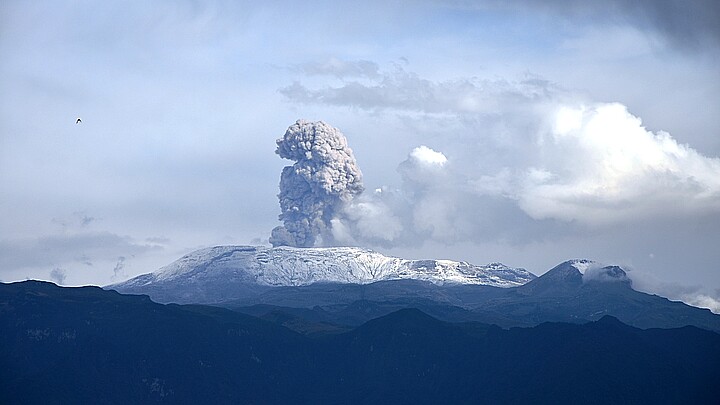Climate
Landslides in Colombia kill at least 14 with 20 still missing
Rescue teams from the Civil Defense, Red Cross, and firefighters are still searching for any survivors that might still be buried under the debris

July 19, 2023 8:10am
Updated: July 19, 2023 8:10am
A landslide caused by heavy rains in central Colombia has left at least 14 people dead as of Tuesday and destroyed several homes in the region, according to the country’s Civil Defense agency.
The landslide took place on Monday in the mountainous municipality of Quatame in the Cundinamarca province. It was caused by heavy rains that flooded three nearby streams.
According to Civil Defense operational director Ricardo Coronado, the mudslide destroyed everything in its path, including multiple homes and roads.
The death toll from the landslide increased to 14 as of Tuesday, according to Nicolas Garcia Bustos, the governor of the province. Several others were transferred to nearby hospitals for treatment, he added.
The governor declared a public emergency and mobilized the province’s special administrative unit for disaster management “to dispose of resources in an immediate manner” to address the landslide.
Rescue teams from the Civil Defense, Red Cross, and firefighters are still searching for any survivors that might still be buried under the debris. Authorities believe that around 20 people are still missing.
“Relief agencies with drones are resuming the search,” Quetame Mayor Camilo Parrado also said, adding that some households had lost “two, three, even four family members.”
Colombian President Gustavo Petro on Tuesday on Twitter offered his condolences to the families of the victims. He said that the incident “demonstrates that there is an imperative need” for officials to plan urban areas more efficiently.
A highway that connects Bogota to the eastern part of the country was swept away by the landslide, forcing drivers to take alternate routes. The incident disrupt commerce between the two regions since it is a key transportation route used to transport beef, rice, and palm oil.








